7 Must-Visit Historical sites in Turkey
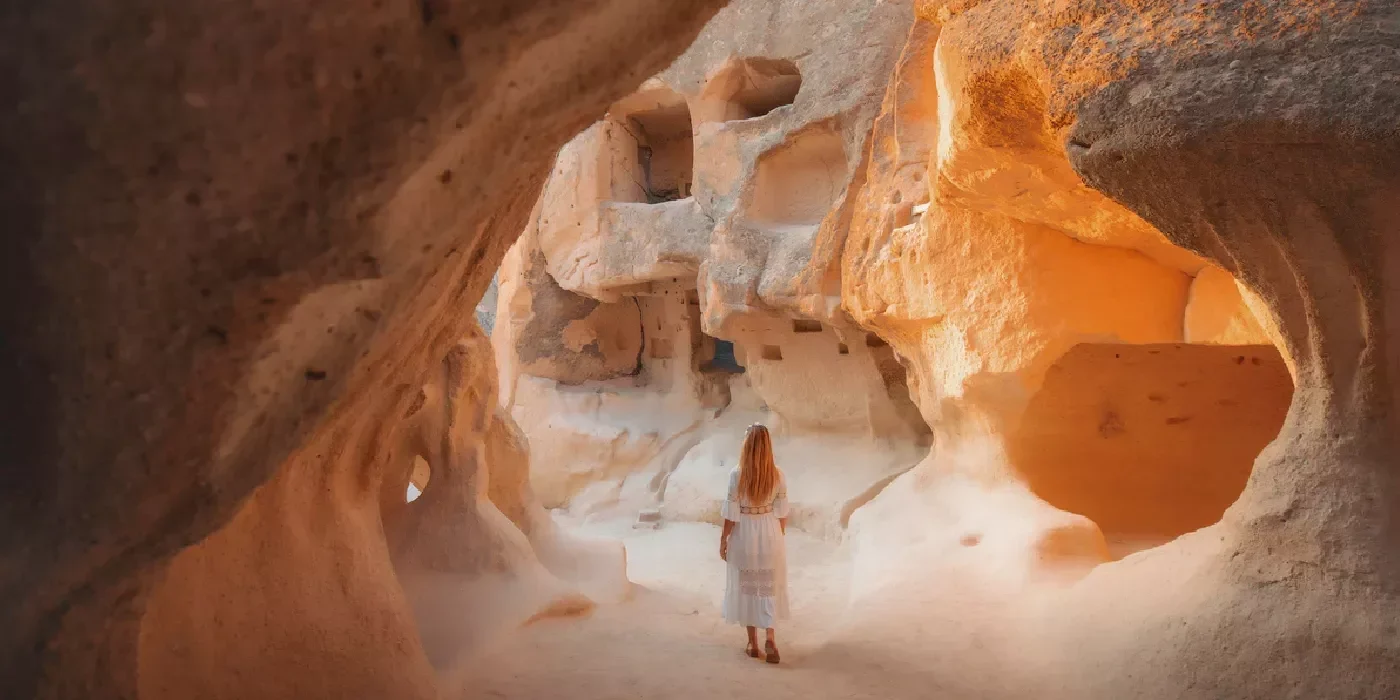
The historical sites in Turkey showcase the remarkable legacy of civilizations that shaped this transcontinental land. The country has 22 UNESCO World Heritage Sites - 20 cultural and 2 mixed sites. These ancient marvels offer an amazing journey through time.
Ancient empires have made their mark across Turkey. Their ruins tell stories of gods, warriors, and civilizations that changed human history. This article uncovers seven places to visit that are steeped in Turkey's rich history.
1- Hagia Sophia – Istanbul's Timeless Masterpiece
The Hagia Sophia stands proudly in the heart of Istanbul. This colossal structure is the most extraordinary architectural achievement among Turkey's historical sites.
A Fusion of Byzantine and Ottoman Heritage
The Hagia Sophia boasts an impressive blend of Byzantine and Ottoman architectural elements. The world's largest cathedral held this title for almost a thousand years. It was built as a church by Emperor Justinian I in 537 CE. The engineering marvel has a massive dome with a diameter of 31 meters and a height of 55 meters above the floor level. Tourists still find themselves amazed by its grandeur.
Sultan Mehmed II transformed the Hagia Sophia into a mosque after the conquest of Constantinople in 1453. Ottomans preserved the Christian elements and introduced Islamic ones. This produced a fusion of two great civilizations. Both empires have left their imprint through over the centuries' reconstructions. The architectural dialogue between Ottoman Islam and Byzantine Christianity makes this monument an emblem of religious and cultural harmony.
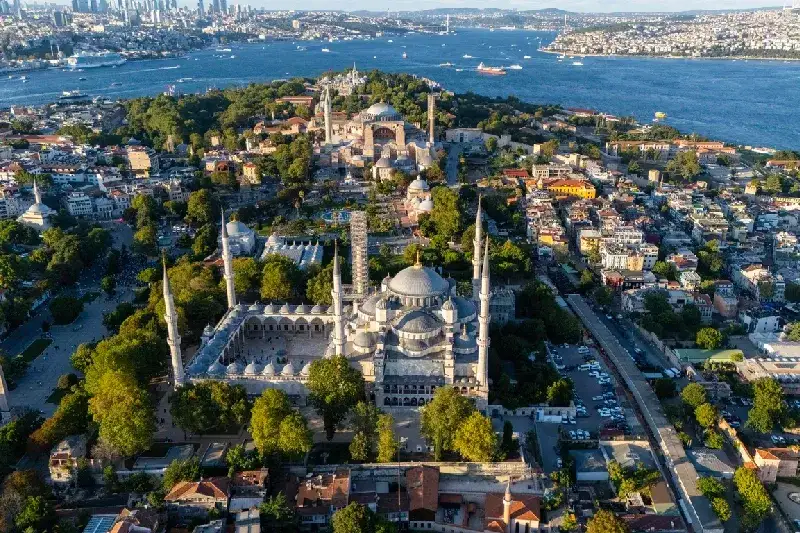
Customize Your Dream Vacation!
Get in touch with our local experts for an unforgettable journey.
Plan Your Trip
Main Highlights to See
The architecture has several remarkable features to attract your attention:
- Main Dome - This architectural marvel seems to float above the main space. It is supported by forty arched windows and lights up the inside.
- Byzantine Mosaics - Several remarkable mosaics have been restored after centuries of being hidden during Ottoman times.
- Islamic Calligraphy - Eight wooden medallions showcase stunning Ottoman calligraphy. These enormous round panels contain the names of Allah, Muhammad, the first four caliphs, and the Prophet's grandsons.
- The Emperor Door - This massive oak and bronze entrance served only Byzantine emperors. It stands 7 meters tall and is among the world's largest doors.
- The Wishing Column - A bronze-covered pillar within the northwest section has been nicknamed "weeping column" or "sweating column." It is believed that your desire might be fulfilled if you put your thumb inside its hole and rotate your hand 360 degrees.
Visit Tips: Best Times and Entry Details
Timing wisely does matter a great deal for this crowded destination:
- Best Times to Visit: Avoid the crowds by visiting early (8:30-9:30 AM) or late in the afternoon (3:30-4:30 PM). Winter is less touristy, though the site is busy year-round.
- Entrance Fee and Hours: Hagia Sophia is open daily from 9:00 AM until 5:00 PM. Summer hours extend until 7:00 PM (April-October). Free admission after its conversion to a mosque in 2020.
- Dress Code: Visitors must dress appropriately for an active mosque. Women must cover their heads, shoulders, and knees. Men should wear long pants. Scarves can be found at the entrance if needed.
- Guided Tours: A certified guide allows you to best enjoy the site's historic and architectural significance. Audio guides are offered in several languages.
- Photography: Photos can be taken inside, but no flash to maintain the ancient artwork. Tripods need special permission.
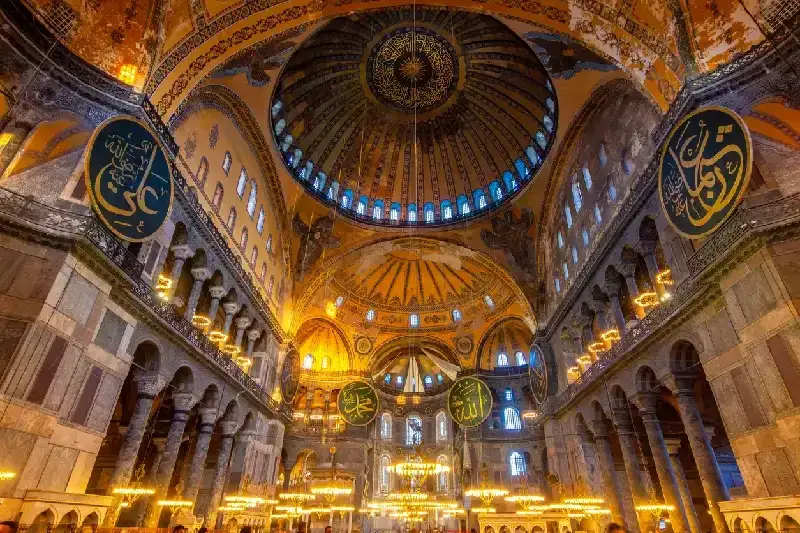
2- Ephesus – Roman Pride in Izmir
The ancient city of Ephesus lies on Turkey's west coast in Izmir. Its remarkably preserved ruins showcase Roman civilization's grandeur.
The Library of Celsus and Marble Streets
The Library of Celsus is the treasure of Ephesus. This architectural marvel was built around 125 CE. Gaius Julius Aquila built it to honor his father, Tiberius Julius Celsus Polemaeanus, a Roman emperor of Asia. This massive structure served two purposes - a tomb and a library. The huge entrance made it look even more imposing, and its eastern orientation allowed greater morning light in reading rooms.
The library held about 12,000 scrolls in its peak. That was the third-largest library in the ancient world following Alexandria and Pergamum. Visitors now can see refined botanical carvings and four statues. They illustrate female virtues: Sophia (wisdom), Episteme (knowledge), Ennoia (intelligence), and Arete (excellence).
Ephesus's marble streets house many well-preserved structures. The grand theater could seat as many as almost 25,000 people and was finished under Emperor Trajan. The theater was built in the Roman Imperial period and shows the city's status as a cultural center.
The Temple of Artemis – One of the Seven Wonders
The Temple of Artemis, one of the Seven Wonders of the Ancient World, now stands as just a single column.The glory of the temple established Ephesus as a "Servant of the Goddess."
Pliny reports that the temple took more than 120 years to build. Dainty carved statues decorated the lower parts of columns (columnae caelatae) and delicate friezes lined the roof gutter (sima).
Visit Nearby attractions
Selçuk has several wonderful attractions near Ephesus:
- The Basilica of St. John - A huge religious complex on top of Ayasuluk Hill shows the city's importance to early Christianity.
- House of Virgin Mary - Most believe Mary, the mother of Jesus, spent her final days at this peaceful spot.
- Ephesus Archeological Museum - The museum houses statues, artifacts, and domestic items from the ancient city.
Most visitors spend two to four hours visiting Ephesus. The ideal time to visit is in the early morning. This avoids congestion and summer temperatures. Wear sturdy shoes as the old marble streets are slippery.
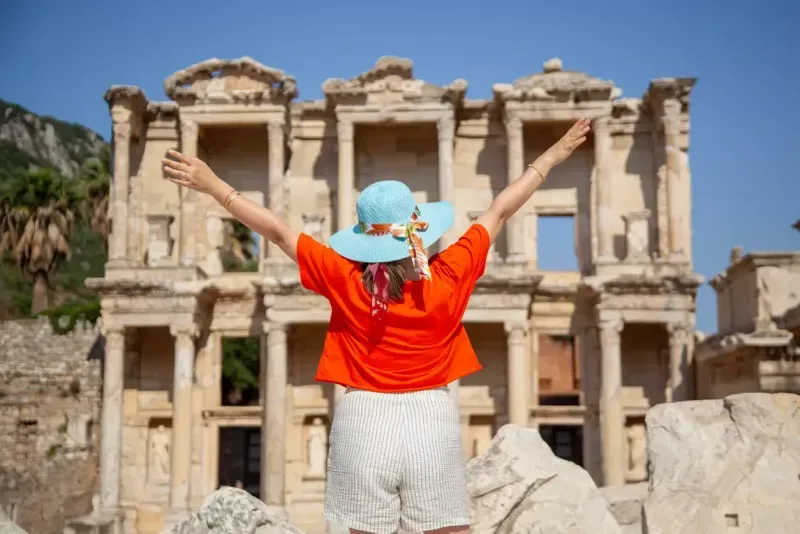
3- Cappadocia – The Rock-Cut Churches and Underground Cities
Cappadocia's surreal landscape is located in central Turkey and shows how humans brilliantly adapted to nature. The soft volcanic tuff of the region has been eroded into fantastical forms over thousands of years. You'll find some of Turkey's most captivating historical sites here- rock-cut churches, monasteries, and underground cities that date back to the 4th century.
Göreme Open-Air Museum: A UNESCO Treasure
Cappadocia's showpiece of rock-cut architecture, the Göreme Open-Air Museum, has been a UNESCO World Heritage site since 1985. The extensive complex houses over 30 rock-cut churches and chapels in volcanic rock, first inhabited by Byzantine monks in the 4th century on the teachings of Basileios the Great.
Highlights include vibrant post-iconoclastic frescoes, especially in the Dark Church (Karanlık Kilise), that have remained intact for centuries because of the absence of light. A few of the other notables are Tokalı Kilise (Buckle Church) with 9th–11th-century frescoes, Elmalı Kilise (Apple Church) with late 12th–13th-century paintings, and St. Barbara Chapel with its unique 11th-century adornments.
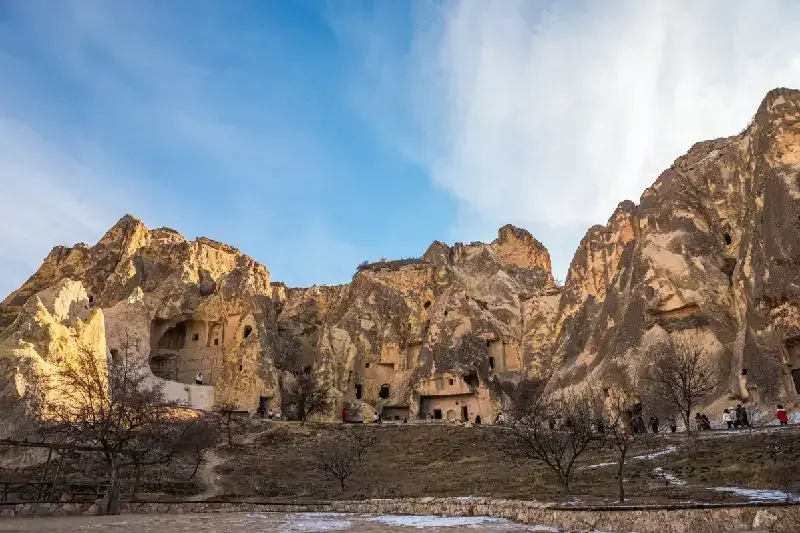
Kaymakli and Derinkuyu Underground Cities
Cappadocia’s underground cities are as captivating as its rock-cut churches. Derinkuyu, the largest, extends 85 meters below ground on eight stories and could have sheltered 20,000 people at once. Kaymakli is smaller but more easily visited, with broader tunnels and better lighting.
Built by the Phrygians in the 8th–7th centuries BC and extended by the Byzantines, these underground cities had houses, kitchens, churches, stables, wine presses, and advanced ventilation. Clever defenses like hidden doors and narrow tunnels excluded invaders.
Both cities are open to the public year-round — best visited early morning or at lunchtime to beat the crowds.
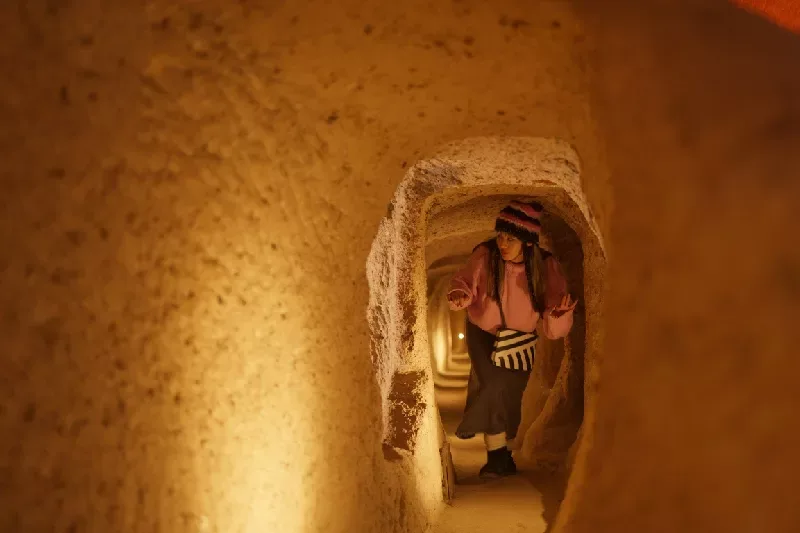
4- Topkapi Palace – The Ottoman Seat of Power
Topkapi Palace stands tall above Istanbul's historic peninsula. This palace is the imposing structure that served as the Ottoman Empire's administrative hub. Built in the 15th century, the palace complex was more than a royal palace. It served as the administrative and educational hub of the Ottoman state.
The Harem and Imperial Treasury
The Topkapi Palace Harem, meaning "forbidden" in Arabic, is a lavish complex of 400+ tile-adorned rooms, gardens, and courtyards. More than 1,000 residents lived here in a strict hierarchy during its heyday under the rule of the powerful Queen Mother.
Highlights include Sultan Murat III’s Privy Chamber, the Queen Mother’s Apartments, and the Golden Road. The nearby Imperial Treasury holds one of the world’s finest Islamic arms collections, along with jeweled weapons, ornate thrones, and precious jade and crystal objects.
Cultural Etiquette When Visiting
Your visit to this Turkish historical treasure requires attention to certain cultural rules. Dress modestly by covering your shoulders and knees since some parts of Topkapi are still culturally sensitive.
You can photograph the majority of the palace areas. The Sacred Relics Chamber, where they keep significant Islamic relics, does not permit photography.
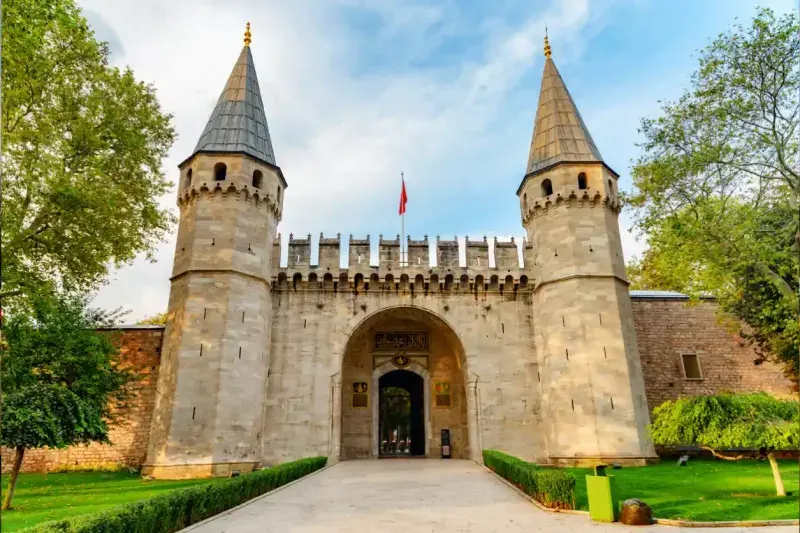
5- Pamukkale & Hierapolis
The surreal landscape of Pamukkale is a combination of natural wonder and history that sets it apart from Turkey's other sites.
The White Travertine Terraces of Pamukkale
Pamukkale’s dazzling white travertine terraces cascade down a 200-meter cliff, resembling a frozen waterfall. Formed over thousands of years by calcium-rich hot springs (35°C–100°C), these pools are coated in snow-white calcium carbonate, giving the site its name, "cotton castle" in Turkish. UNESCO-listed, the site's mineral forests and fossilized waterfalls make up one of Turkey's most bizarre landscapes.

The Ancient City of Hierapolis and Its Theater
Hierapolis, a Hellenistic Greek city, crowns the white travertine terraces of Pamukkale. A thermal spa foundation, it developed into one of the ancient world's great health centers, with people coming to bathe in its mineral waters. Its most striking ruin, the Roman Theater, seated 15,000 and remains an imposing testament to ancient architecture.
Swimming in Cleopatra's Pool
Swimming in Cleopatra's Antique Pool offers a unique experience. Visitors can swim among fallen ancient marble columns and architectural pieces. Stories tell us this thermal pool was Mark Antony's gift to Cleopatra VII, Ancient Egypt's last Pharaoh. While historians debate whether Cleopatra actually visited, people have sought healing here for over two millennia.
6- Troy – The City of Legends
Troy is among Turkey's most fascinating historical sites. A UNESCO World Heritage Site near Çanakkale, it blends myth and history in a way that has captured people's imagination for centuries.
The Replica Trojan Horse and Excavation Sites
At Troy’s entrance stands a 12.5-meter wooden replica of the Trojan Horse, built in 1975 from Kaz Mountain pine. Visitors can climb inside for panoramic views of the site, which holds 4,000 years of settlement layers. Highlights include city walls, temples, megaron houses, and an Odeon. Another replica, from the 2004 film Troy, is displayed on Çanakkale’s waterfront.
The Best Time to Visit
Spring (April-May) and autumn (September-October) are the best times to go to Troy. Both seasons offer great weather perfect for site exploration. Spring fills the countryside with flowers and greenery, and autumn offers milder temperatures and fewer tourists. Make sure to explore the replica of the wooden horse and examine the different settlement layers uncovering thousands of years of human life.
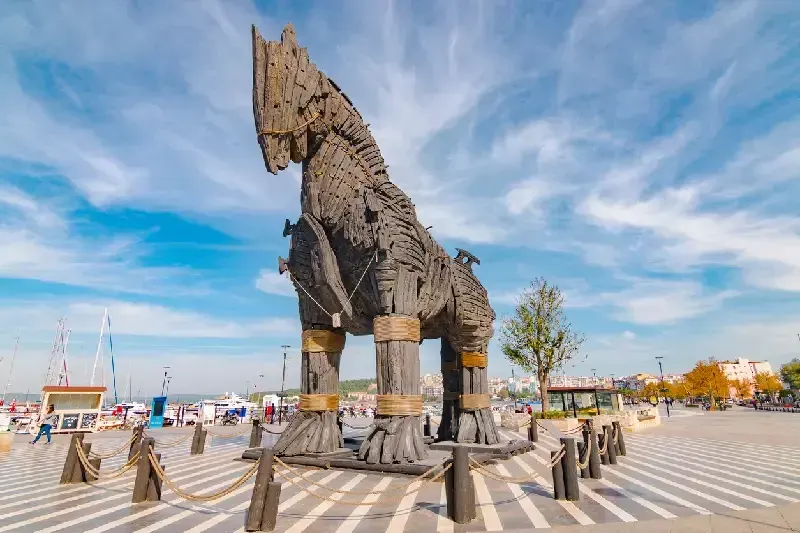
7- Aspendos – The Roman Theater That Defies Time
The Roman Theater of Aspendos has stood strong for almost two thousand years and ranks among the world's most remarkable ancient monuments. This architectural masterpiece sits in Turkey's Antalya region and gives visitors an unmatched view into Roman engineering and artistic brilliance.
A Perfectly Preserved Ancient Theater
British archaeologist David George Hogarth once said, “This is not like anything I ever saw before,” and the sentiment still holds true. Built under Emperor Marcus Aurelius, this well-preserved theater spans 100 meters, rises 22 meters, and seats over 7,000. Its two-story stage, adorned with intricate carvings and supported by monolithic columns, offers exceptional acoustics, carrying sound clearly to the highest rows without modern technology.
Annual Cultural Performances and Events
The theater stays true to its roots by hosting spectacular cultural events. The International Aspendos Opera and Ballet Festival has brought world-class performances here since 1994. Each summer, talented artists, opera singers, orchestras, and ballet dancers perform within these 1,800-year-old walls.
The stunning Fire of Anatolia dance show lights up Aspendos regularly. This performance blends rhythmic beats and captivating choreography with over 3,000 unique dance moves that draw from Anatolia's thousand-year-old cultural heritage.
Exploring the Surrounding Ancient Ruins
The theater might steal the spotlight, but Aspendos holds many more historical treasures. The ancient city's ruins feature well-preserved aqueducts that helped place both Aspendos and the theater on UNESCO's Tentative Heritage List in 2015. Visitors can explore the basilica, agora, bath, stadium, monumental fountain, acropolis, and assembly building alongside the theater.
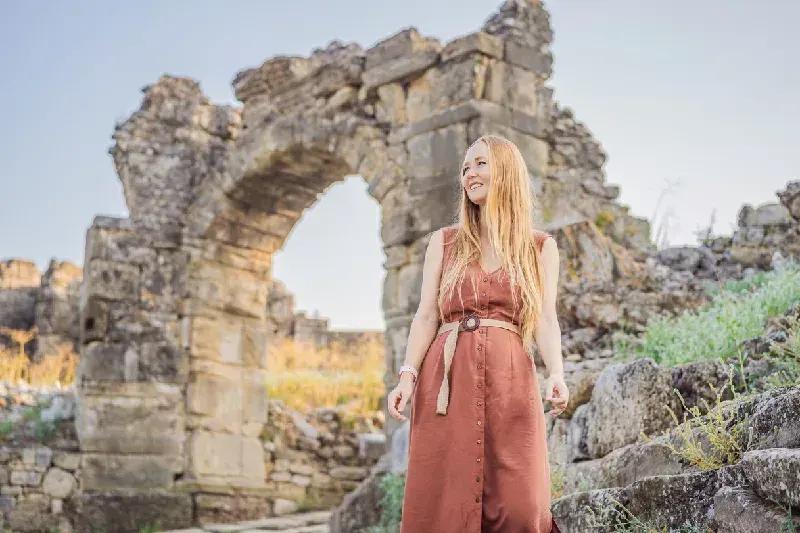
Discover Turkish historical sites in depth with our immersive Turkey Tour Packages!
Turkey stands as a living museum where thousands of years of human civilization remain carved in stone, marble, and volcanic rock. These seven historical treasures give us just a glimpse into the country's extraordinary cultural heritage that spans many empires and civilizations. A trip through Turkey's historical sites becomes more than just a vacation - it turns into a deep connection with human history itself.
FAQS
Q1. What is Turkey famous for historically?
Turkey is renowned for its role as the crossroads of civilizations, from the Hittites and Byzantines to the Ottomans.
Q2. What is the most famous historical site in Turkey?
Hagia Sophia in Istanbul stands out as the most iconic, blending Byzantine and Ottoman heritage in one stunning landmark.
Q3. Which ancient city in Turkey is best preserved?
Ephesus is one of the best-preserved ancient cities, famous for the Library of Celsus, marble streets, and grand theater.
Q4. Are there any UNESCO World Heritage sites in Turkey?
Yes — Turkey has many, including Cappadocia, Pamukkale-Hierapolis, Troy, and the Historic Areas of Istanbul.
Q5. What historical sites in Turkey are free to visit?
Several ancient ruins and historical mosques, like the Blue Mosque in Istanbul, can be explored without an entry fee.
